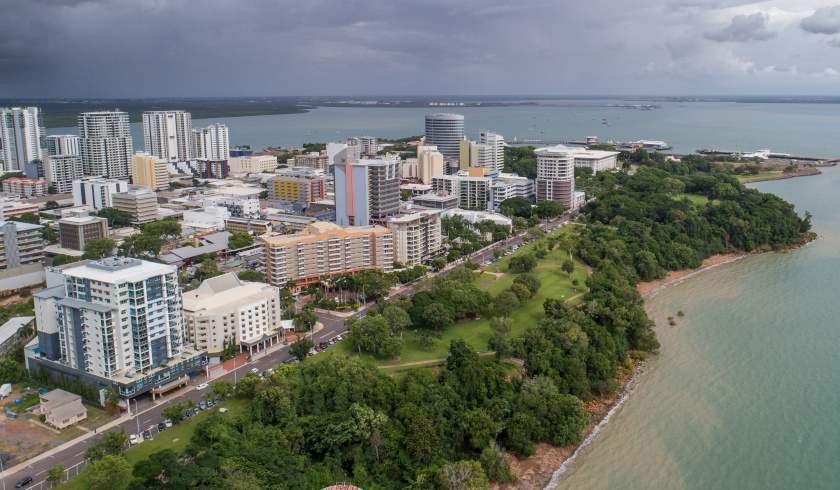Rent growth slows: Find out where the yields are still flourishing
With the closure of international borders weighing heavily on Sydney and Melbourne, the smaller capital cities are posting stronger performances across their rental markets, a new report has revealed.

The latest data from CoreLogic points to a 0.6 per cent increase in national rents across the combined capital over the past two months to May, and a 1 per cent increase across the combined regional areas.
Although growth conditions have slowed, the trend has ultimately remained positive across most regions and housing types.
“Generally, the first quarter of the year is a seasonally strong period for rental markets, so the easing in rental growth is unsurprising,” the report said.
Of the capital cities, Darwin and Perth emerged with the highest annual growth in rent for both houses and units.
Darwin house rents clocked a 21.9 per cent rise, while the price of units increased by 17 per cent. Meanwhile, Perth house rents rose 16.6 per cent, with slightly lesser growth of 14.2 per cent in unit rents.
On the other hand, Sydney and Melbourne continued to record the weakest rental conditions, particularly within the unit sector where closed international borders have had a more significant impact on tenancy demand.
Sydney house rents increased by only 4.6 per cent over the year in May, while unit rents continued to drop in price, falling by another 3 per cent. Meanwhile, Melbourne house rents rose by 1.5 per cent, while unit rents contracted a fairly substantial 7.7 per cent.
|
Annual change in house rents |
Annual change in unit rents |
|
|
Darwin |
21.9% |
17.0% |
|
Perth
Loading form...
|
16.6% |
14.2% |
|
Canberra |
7.6% |
7.1% |
|
Brisbane |
7.3% |
4.3% |
|
Adelaide |
7.2% |
4.1% |
|
Hobart |
7.2% |
2.6% |
|
Sydney |
4.6% |
-3.0% |
|
Melbourne |
1.5% |
-7.7% |
Source: CoreLogic Hedonic Home Value Index, May 2021
Despite lackluster growth in Sydney and Melbourne, Archistar’s chief economist, Dr Andrew Wilson, has drawn a positive from the research.
“Although inner-suburban and CBD unit markets in Melbourne and Sydney continue to record high vacancy rates, the number of advertised vacancies in these areas has declined sharply over the past month – falling by 10 per cent in Melbourne and 5 per cent in Sydney,” Dr Wilson said.
He pointed to several reasons for this alarming trend.
“Record-low activity from investors over recent years due primarily to credit restrictions together with subdued new home building have acted to undersupply rental markets. Increased demand from prospective first home buyers pushed out of housing markets by booming home prices will exacerbate the mismatch between rental supply and demand in most capitals and continue to place upward pressure on already high rents,” Dr Wilson said.
According to CoreLogic, gross rental yields remained subdued as housing values continue to rise faster than rents, with the average gross rental yield across the combined capitals at 3.2 per cent as of the end of May – down from 3.5 per cent last year.
Zooming in on the capital cities, almost every city and non-capital city region has seen yields compress over the past year, with the exception of Perth and Darwin, which rose by 3 per cent and 19 per cent, respectively.
Despite the compression in rental yields, with fixed-term mortgage rates for investors averaging below 2.5 per cent, CoreLogic pointed to plenty of opportunities for cash flow positive properties compared with a few years ago.
A positive cash flow investment would be more challenging in the lowest-yielding capitals, Sydney (2.6 per cent gross) and Melbourne (2.9 per cent gross), but more likely in Darwin (6 per cent gross), Perth and Hobart (each 4.4 per cent gross).
“With investor activity trending higher along with a surge in new residential construction activity, the longer-term outlook for rents is likely a slowdown in the pace of rental appreciation, at least until international borders reopen, which would help to shore up tenancy demand, especially across the inner-city precincts of Melbourne and Sydney,” the report concluded.
Canberra still most expensive
Separate research issued by SQM pointed to Canberra as the most expensive city to rent in, followed closely by Sydney.
According to SQM, rents across the cities are:
|
Median house rent |
Median unit rent |
|
|
Sydney |
$662.3 |
$453.3 |
|
Melbourne |
$507.2 |
$361 |
|
Brisbane |
$494.8 |
$388.3 |
|
Perth |
$519 |
$396.7 |
|
Adelaide |
$437.2 |
$331.7 |
|
Canberra |
$694.6 |
$492.9 |
|
Darwin |
$605.3 |
$426.4 |
|
Hobart |
$490.1 |
$423.8 |
Source: SQM Research - week ended 28 May 2021
